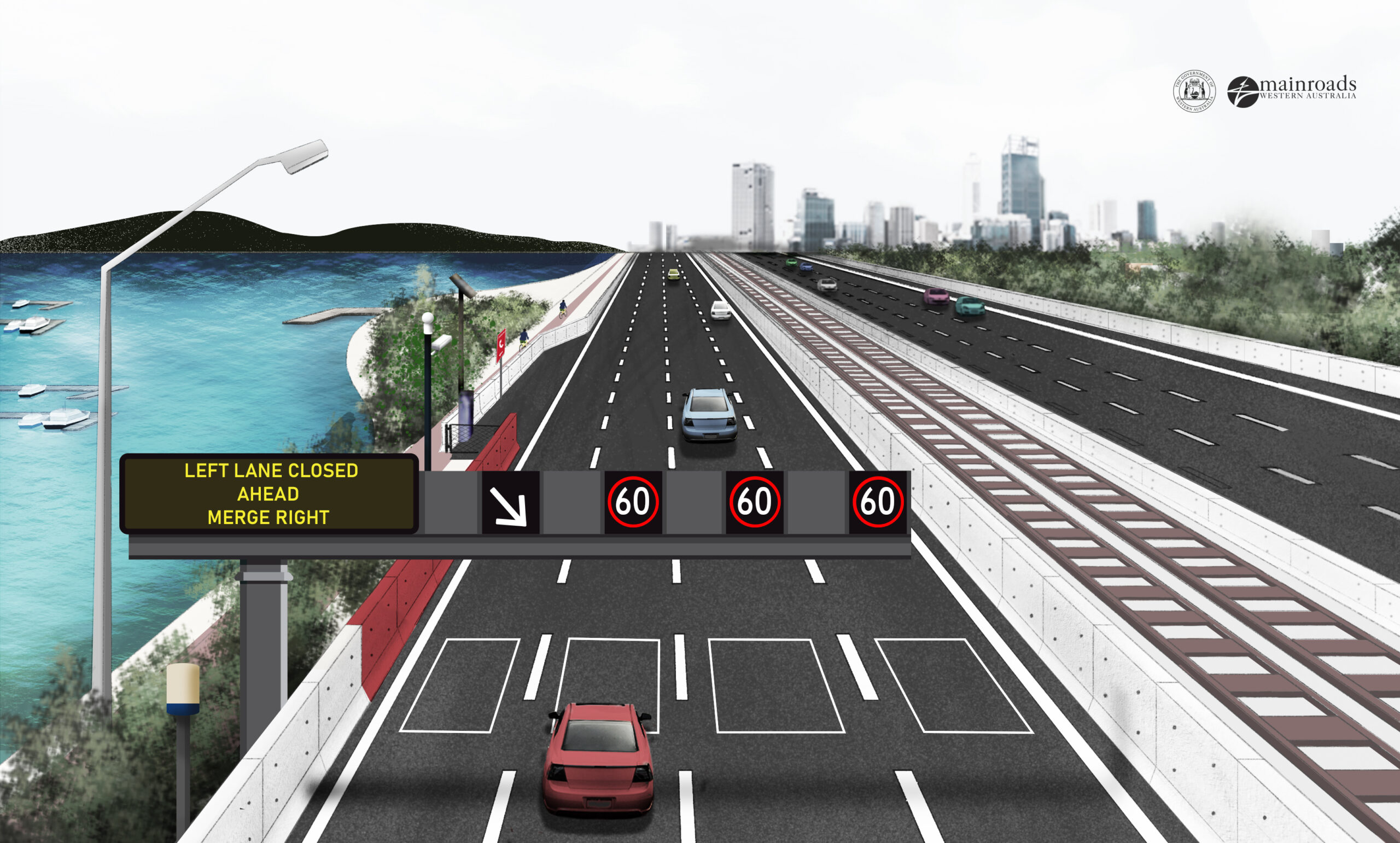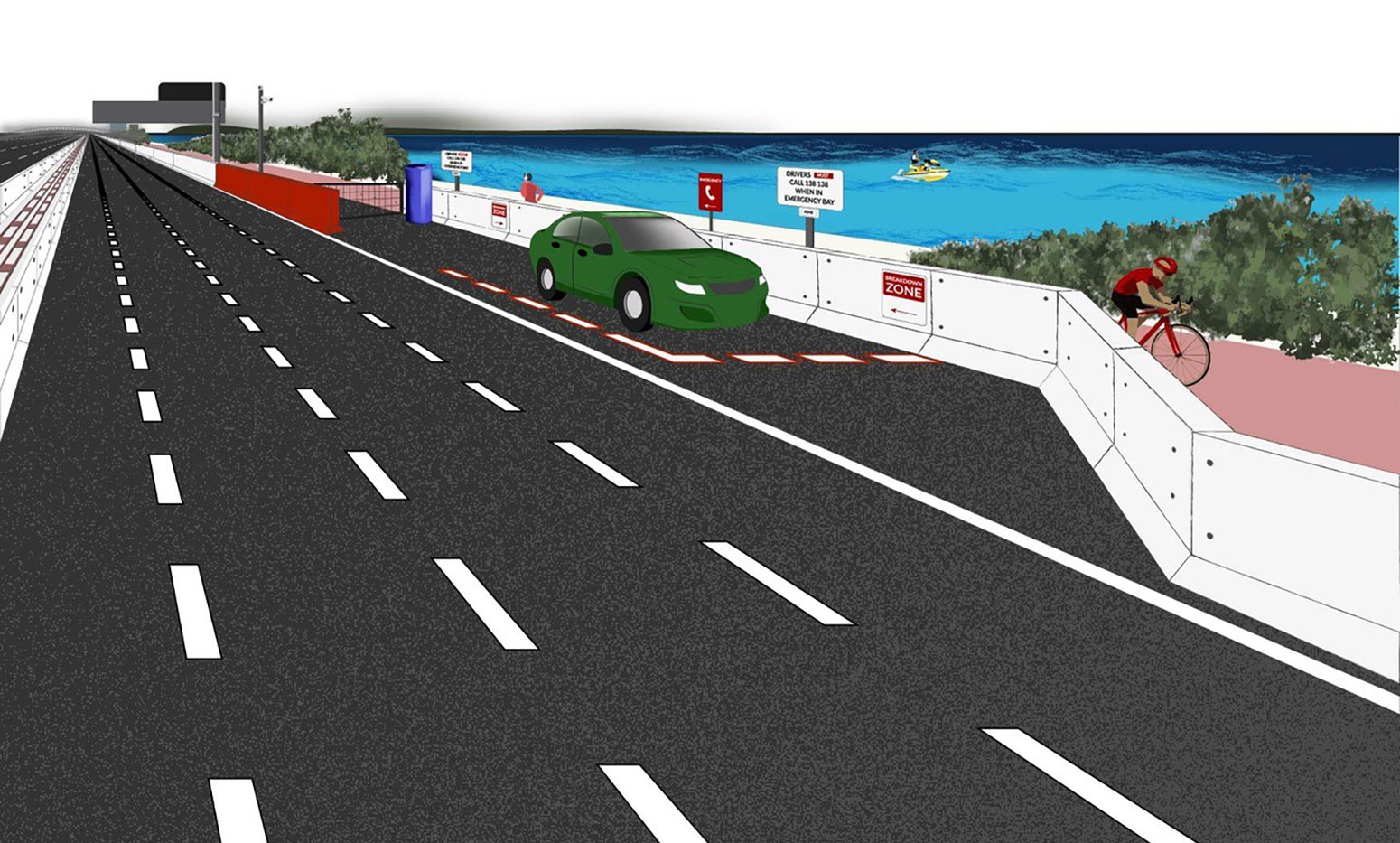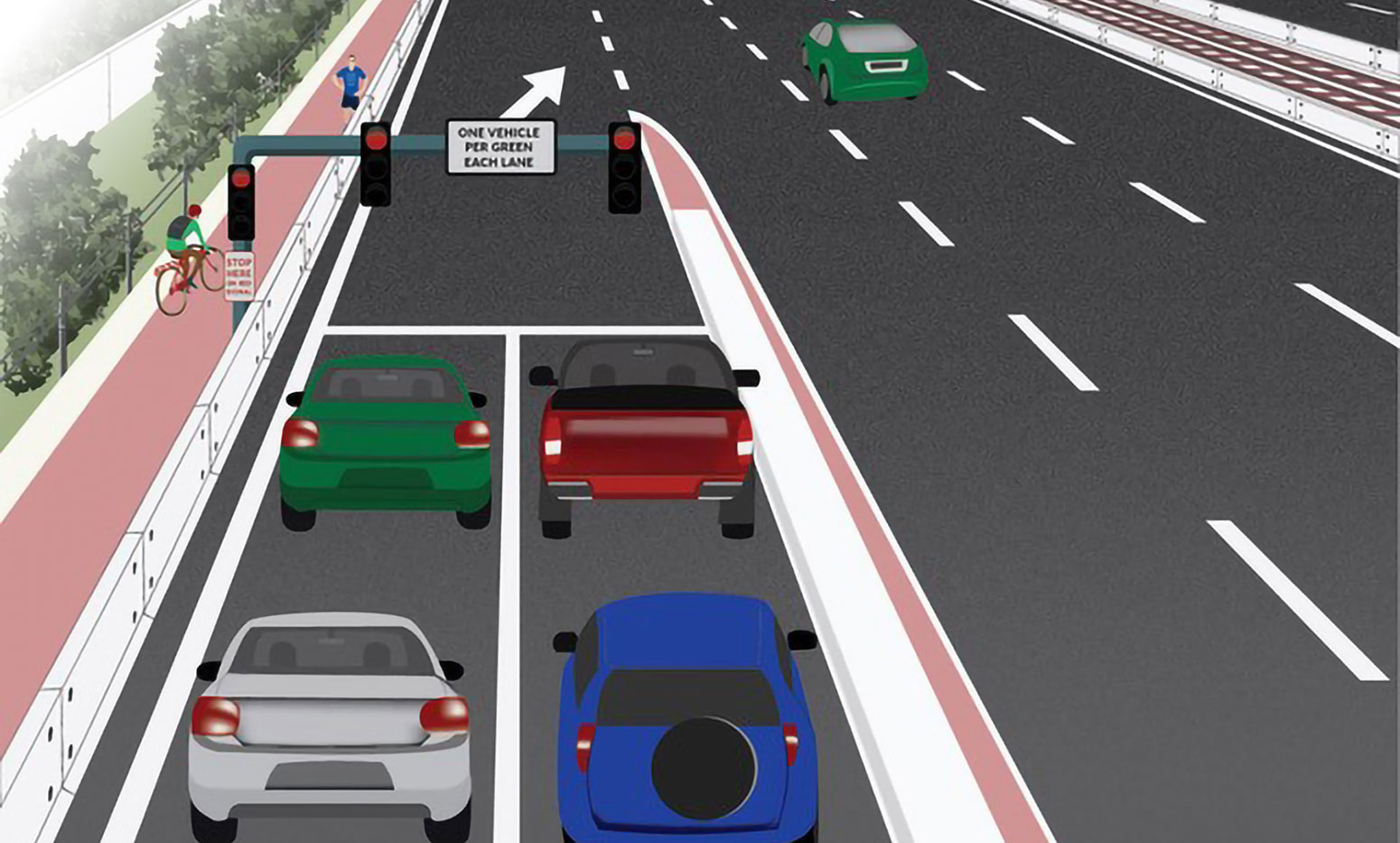The challenge we’re solving
Introducing Smart Freeway technology
Using smart technologies has delivered more reliable journeys, a safer driving experience and reduced congestion while we make better use of existing road infrastructure.
Main Roads has installed these new technologies on the Kwinana Freeway northbound and will soon bring them to other parts of the freeway network.
Mitchell Freeway Southbound
Our next Smart Freeway will run southbound along the Mitchell Freeway, using a range of technologies to reduce congestion, including installing 16 co-ordinated ramp signals from Hester Avenue to Vincent Street and additional technologies being considered at key locations closer to the Perth CBD.
The new Mitchell Smart Freeway will improve journey reliability and provide congestion relief to more than 180,000 motorists per day by safely reducing stop-start conditions at merge points. To find out more about this new project visit the Main Roads website by clicking here.
Kwinana Freeway Northbound
Kwinana Freeway northbound, from Roe Highway to the Narrows Bridge, has delivered on its promise, with drivers saving up to 10 minutes on journey times.
Along with installing new technologies and traffic signals at five northbound on-ramps, Perth’s first Smart Freeway involved converting the emergency lane into an additional traffic lane, from Canning Highway to the Narrows – a location where space precluded traditional widening.
With Main Roads trained staff managing traffic on the freeway and entry ramps, congestion has been reduced, safety increased and travel times have improved.
Central Lanes

Emergency Stopping Bays

Co-ordinated Ramp Signals

Explore the key features
How to use a Smart Freeway
How will my journey be easier?
Main Roads’ state-of-the-art Road Network Operations Centre is responsible for improving road network efficiency – keeping motorists safe while making journey times shorter and more reliable on our Smart Freeway and throughout the entire metropolitan region.
Frequently asked questions
What does it mean when the red circle around the numbers on the speed signs start flashing?
Electronic overhead speed signs advise what the current speed limit is on that section of the northbound Kwinana Freeway.
When operators need to lower those speed limits, in response to an incident or to prevent congestion, the signs will display the dropped speed limit and the red circle around the numbers will flash to draw drivers’ attention to those changes.
The flashing red circle remains flashing until the speed returns to their usual limits.
What does it mean when the ramp signals are flashing yellow?
The ramp signals are used to prevent congestion on the Smart Freeway -– mainly during peak periods or when there is an incident. They will flash yellow when they switch on and again when they switch off, to let drivers know of the change.
When switching on, the yellow lights flash for 10 seconds followed by four seconds of constant yellow then six seconds of red before switching to the normal green, yellow, red cycle.
When flashing yellow, you may proceed through the lights with caution, just like other traffic signals. If they change to constant yellow before you get to the stop line, stop and wait for the green light signals.
When the ramp signals are switching off, they flash yellow for ten seconds, during which you may proceed with caution.
Will Smart Freeway technology be rolled out across the entire freeway network?
Smart Freeway technology may well be considered for other locations on our freeway network. However, each project will be considered on its own merits and will undergo a rigorous process to ensure the right solution for the area and the network is identified.
What is a Smart Freeway?
Smart Freeways are used successfully around the world to manage congestion, improve safety and get the most out of existing freeway infrastructure.
Using Intelligent Transport Systems (ITS), traffic conditions can be monitored and adjusted to reduce congestion by changing speed limits when needed, using ramp signals to make merging easier and opening and closing lanes in the event of an incident.
Where else have Smart Freeways been used?
Smart Freeways are also known as Managed Motorways, Smart Motorways or Managed Freeways. They can be found in North America, Asia, Europe and the UK, along with most eastern states of Australia.
Our Smart Freeway has been built using a ‘safety first’ best practice approach. We’ve taken the best elements from other jurisdictions and tailored a mix of technology and people skills to suit the local environment. You can find out more here.